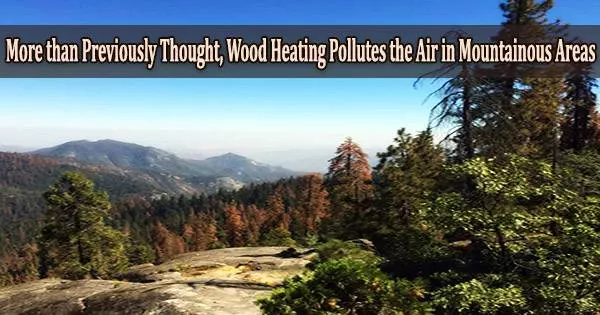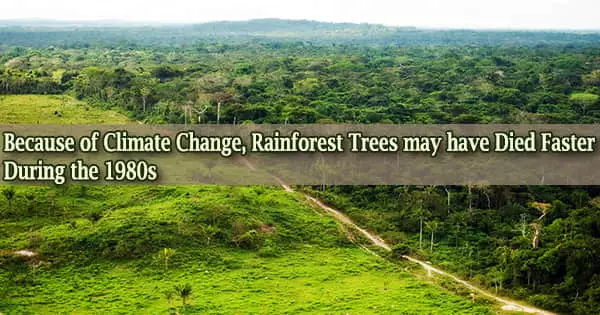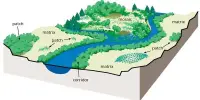In Europe, a quarter of a billion people reside in mountain valleys. More of this population than previously thought is impacted by air pollution. A Slovenian-German study team came to this conclusion after taking measurements in the Northern Dinaric Alps.
Due to temperature inversions in winter, pollutants are trapped in the valleys to such an extent that soot and fine dust could reach alarming levels even in small villages, as they otherwise occur mainly in the centres of congested metropolises, write researchers from the Universities of Ljubljana, Molise and Nova Gorica and the Leibniz Institute for Tropospheric Research (TROPOS) in the scientific journal Atmospheric Chemistry and Physics (ACP). The ability to more thoroughly analyze the pollution distribution was made feasible by mobile measurements utilizing a TROPOS-instrumented backpack.
More than half of Europe’s harmful PM2.5 small particulate matter (PM2.5) is caused by wood combustion. The greatest source of this pollutant nowadays, according to the European Environment Agency (EEA), is combustion of wood.
The use of wood as an alternative fuel has considerably increased as a result of the promotion of wood as a “carbon dioxide-neutral” fuel, the rising expense of fossil fuels, and successive financial crises. When using tiny heating systems, people are more prone to burn wood for heating their homes.
Most research on air quality to far has been concentrated in urban areas. Over a quarter of the population does, however, reside in rural areas of the EU, the UK, and the four EFTA nations of Iceland, Liechtenstein, Norway, and Switzerland. The researchers closely examined a karst hollow in Slovenia to better understand how wood burning affects the air quality in such communities.
The depression that surrounds the settlement of Retje in the municipality of Loki Potok is typical of many steep and hilly rural locations in Central and South-Eastern Europe that use wood heating systems.
The study location is situated in a shallow karst depression with topography that facilitates the development of temperature inversions and cold air pools that are common in many valleys and relief depressions in the winter.
During temperature inversions, pollutant levels in the hollow were highest in the early evening, reaching up to 22 micrograms per cubic metre for black carbon and 560 micrograms per cubic metre for particulate matter. This is the result of domestic wood burning, which increases when people come home after work, and the stable air layer at the bottom of the hollow. However, with some wind, both black carbon and particulate matter levels in the basin dropped to less than 1 and 12 micrograms per cubic metre, respectively, which is about four times lower than during a temperature inversion and in line with European regional background levels.
Dr. Kristina Glojek
Mobile measurements with equipment on a backpack in particular, along with two fixed measuring stations at the bottom of the hollow in the town and on a hill, supplied essential information on the dispersion of air contaminants in space.
With this backpack, the team walked the six-kilometre route through the valley three times a day in December 2017 and January 2018 in the morning, at midday and in the evening. In 107 measurement tours, 642 kilometres were covered on foot.
The scientists looked studied black carbon, which is sometimes known as “soot” informally, in addition to particle matter. The incomplete burning of carbon-containing materials like wood or fossil fuels results in black carbon. The microscopic soot particles are adhered to, among other things, by carcinogenic chemicals.
Thus, in terms of health, black carbon is regarded as a very hazardous part of particulate matter. While the fixed measuring stations provided hourly concentrations of black carbon (eBC) of 1 to 40 micrograms per cubic metre and particulate matter concentrations (PM10) of 10 to 205 micrograms per cubic metre, the mobile measurements provided black carbon and PM2.5, but with levels more representative of the actual concentrations many people in the hollow were exposed to.
One effect that frequently happens in the mountains during the winter and proved to be particularly troublesome is to blame for the high levels of pollutants: in the morning, the sun warms the upper parts of the relief depression faster than the lower parts because the morning fog that forms in the relief depression shielded from the wind prevents warming near the ground. Since the exhaust gases and particles cannot escape upwards, they condense at the bottom due to the consequent temperature inversion.
In this study, several temperature inversion events took place, during which pedestrian level pollutant concentrations of soot (eBC) and fine particulate matter (PM2.5) averaged 4.5 micrograms per cubic meter and 48 micrograms per cubic meter, respectively. These values are comparable to the central areas of major metropolises with heavy traffic.
These values are much larger than the European Union’s annual limit (20 micrograms per cubic metre) and the World Health Organisation’s (WHO) recommendations for the daily limit (15 micrograms per cubic metre).
As measured by the EU Air Quality Index for fine particulate matter (PM10 and PM2.5), air quality was very poor during such temperature inversions. Overall, air quality was only moderate during the entire study period (December and January).
“During temperature inversions, pollutant levels in the hollow were highest in the early evening, reaching up to 22 micrograms per cubic metre for black carbon and 560 micrograms per cubic metre for particulate matter. This is the result of domestic wood burning, which increases when people come home after work, and the stable air layer at the bottom of the hollow. However, with some wind, both black carbon and particulate matter levels in the basin dropped to less than 1 and 12 micrograms per cubic metre, respectively, which is about four times lower than during a temperature inversion and in line with European regional background levels,” reports Dr. Kristina Glojek who studied for her PhD at the University of Ljubljana.
Residents of the lower slopes of south-facing slopes in the village of Retje were most exposed to high concentrations of particulate matter during morning and afternoon temperature inversions, whereas during the early evening hours, when the inversion is restricted to the bottom of the hollow, those residents breathe in the highest levels of pollutants.
Such weather patterns are common of mountainous and hilly areas. More than 70% of all winter nights and mornings during the research had temperature inversions.
“These very stable conditions prevent effective mixing of the air in the relief depression, which leads to increased pollutant levels. Therefore, during temperature inversions, particulate matter concentrations in the sink rise to levels comparable to those in larger European city centres and above the EU daily limit value (PM10 = 50 micrograms per cubic metre) as well as above the annual limit value and the WHO daily guideline values (PM2.5 = 20 and 15 micrograms per cubic metre, respectively),” emphasises Prof. Mira Pöhlker from TROPOS.
From the researchers’ point of view, the example of the small relief depression in Slovenia points to a problem that is not limited to this region alone:
“The pollutant concentrations measured during the temperature inversions in the rather sparsely populated small relief hollow are worrying, as similar conditions can be expected in numerous hilly and mountainous regions throughout Europe, where about 20 percent of the total population live, 30 percent of whom live in rural relief hollows comparable to the Retje site,” emphasises Prof. Griša Močnik from the University of Nova Gorica.
The findings of this study, in the opinion of the Slovenian-German research team, highlight the significance of high-resolution measurements of air quality also in rural areas to monitor and aim to reduce the pollution from residential wood burning and its subsequent health effects, especially in mountainous areas with limited atmospheric self-purification capacity. Therefore, they specifically propose:
- to study pilot sites at smaller spatial scales that could help decision-makers to take effective action at the local level;
- raising public awareness of the issue of air pollution from wood burning, including the use of quality fuels (e.g. dry wood), energy efficiency, knowledge of the detrimental impacts on health, the financial implications of inefficient burning, and the best usage and regular maintenance of heating appliances;
- informing residents when weather conditions cause pollutants to concentrate in the valley and burning wood is not recommended;
- identifying local major polluters as they may be the main cause of deterioration of local air quality;
- to lessen the pollution caused by wood burning, it may be possible to promote the retrofitting of current stoves, centralize combustion in district heating systems, improve energy retrofitting of buildings, and switch to a different fuel source if one is available.
Additionally, it is crucial to actively involve the local community in the pollutant emission reduction methods. Furthermore, everyone needs to be aware that this complicated issue does not have a single, all-encompassing solution. Instead, multiple levels of action are required, taking into consideration regional and cultural differences.
















